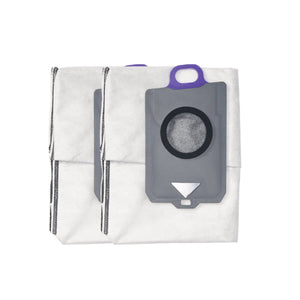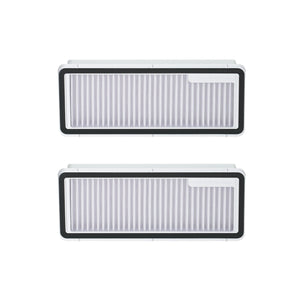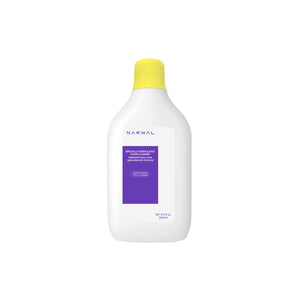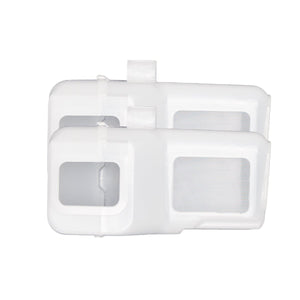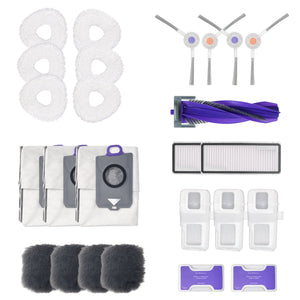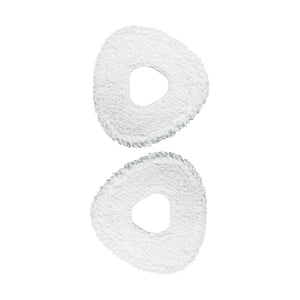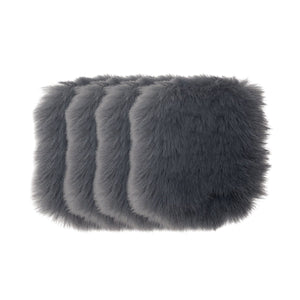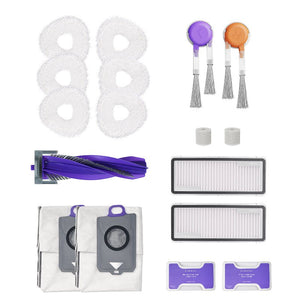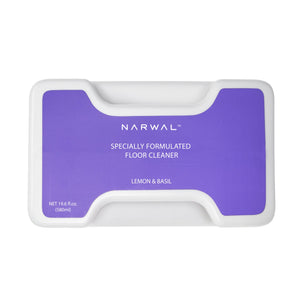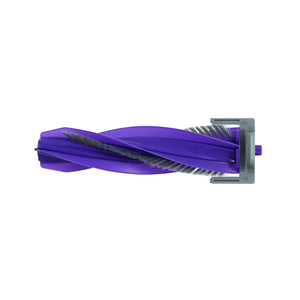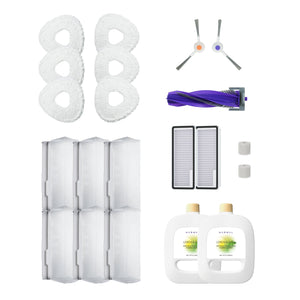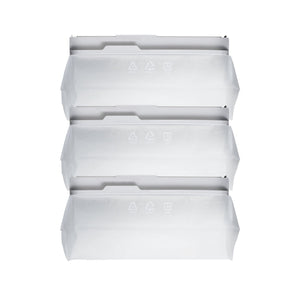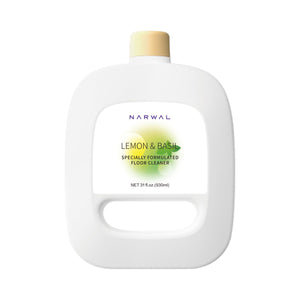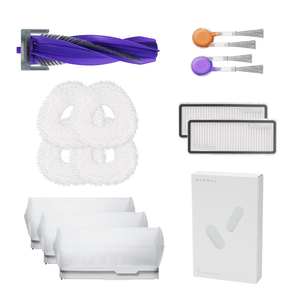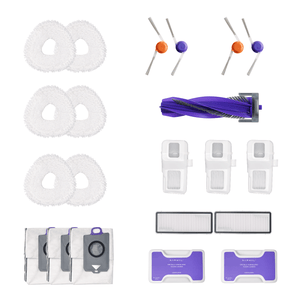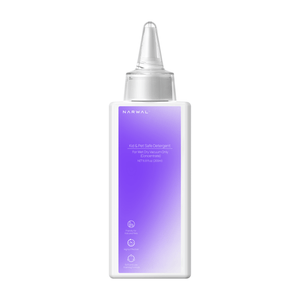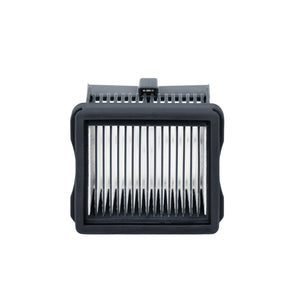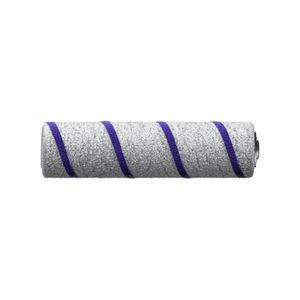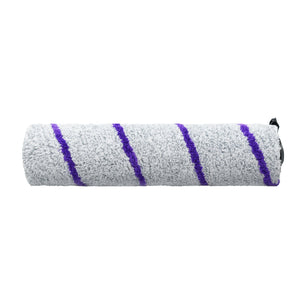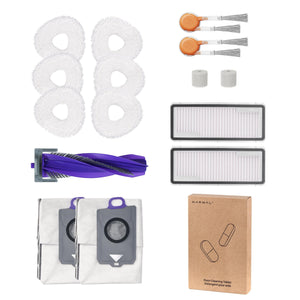Choosing the right brush for your robot vacuum can make cleaning faster and more effective. Different brushes work better on different floors. For example, some brushes pick up pet hair from carpets, while others clean corners or hard floors better.
In this guide, you’ll learn about the main types of robot vacuum brushes—like side brushes, dual brushes, and triple brushes—and where each one works best. We’ll also share simple tips for keeping your brushes clean and working well.
Whether you have carpet, hardwood, or tile, this guide will help you match the right brush to the right room. That way, your robot vacuum can do a better job with less effort.
Understanding the Robot Vacuum Brushes
Robot vacuum brushes do more than just spin—they help your vacuum clean better. While the motor creates suction, the brush moves dirt, dust, and hair into the vacuum so it can be picked up.
Each type of brush has a different job. Some brushes work better on carpet, while others are made for hardwood floors or tight corners. For example, a side brush can reach into corners and along baseboards. A dual roller brush can grab more pet hair from thick rugs. Brushes are one of the most important robot vacuum cleaner components. Without the right brush, even strong suction may leave behind dirt or hair—especially on carpets or along edges.
If your robot vacuum isn’t cleaning well, the problem might be the brush—not the machine. Picking the right brush type for your home helps your vacuum do a better job with less effort.

Main Types of Robot Vacuum Brushes and Their Functions
Robot vacuums use different brushes to clean different parts of your home. Each brush type is made for a special job. Here are the main types and what they do best:
Main Brush (also called a roller brush)
This large brush sits in the middle of the vacuum and spins while the robot moves. The bristles or rubber fins reach into carpet fibers and lift dirt toward the suction opening. Because it makes direct contact with the floor, it’s ideal for picking up dust, hair, and debris from rugs and soft surfaces.
Best for: Carpet, rugs, and large open areas with heavy use.
Side Brush
The side brush extends from the edge of the vacuum and spins outward. It helps collect debris from corners, wall edges, and furniture legs—places the main brush can’t reach. On smooth floors like hardwood or tile, it prevents dust from being left behind by guiding it inward for pickup.
Best for: Hardwood, tile, baseboards, and furniture edges.
Dual Main Brushes
This setup uses two roller brushes spinning in opposite directions. It increases cleaning coverage and creates a stronger grip on carpet fibers, helping to lift embedded dust and hair more effectively. The opposing spin also reduces hair tangling by keeping debris moving evenly toward the suction port.
Best for: Homes with pets, thick carpet, and high-traffic areas.
Triple Side Brushes
Triple side brushes extend the cleaning reach of the vacuum, especially in tight or cluttered areas. With three sweeping points, they can cover more edge area in a single pass and push dirt from hard-to-reach corners toward the main brush. This setup works best in small spaces where precise edge cleaning is needed.
Best for: Small rooms, narrow hallways, and spaces with heavy furniture.

How to Choose the Right Robot Vacuum Brush for Your Flooring Type

Different types of floors need different brushes. Picking the right one helps your robot vacuum clean better and faster. Here are some common questions and clear answers to help you choose:
What brush works best on hardwood or tile floors?
A side brush is effective for cleaning along edges and corners. It can sweep dust, crumbs, and pet hair from corners and edges without scratching the floor. Some vacuums also use soft roller brushes for smooth surfaces.
What brush should I use for carpets or rugs?
A main roller brush is best. It rolls over the carpet and pulls dirt out from the fibers. If you have pets or thick carpets, dual main brushes work better because they pick up more hair and stop it from getting tangled.
Should I use different brushes in different rooms?
Yes, if your vacuum lets you switch brushes. Hard floors need gentle sweeping, but carpets need stronger brushes. Using the right one in each room helps your vacuum last longer and clean more deeply.
Why Narwal Brushes Are the Best Choice for Your Robot Vacuum

Narwal’s brushes aren’t one-size-fits-all. Each brush is developed by our in-house engineers to match the unique speed, weight, and design of every robot vacuum model. We test the brushes for spin direction, cleaning angle, and floor contact pressure to make sure they clean thoroughly without causing damage.
For hardwood floors or rooms with many corners, the Auto Detangling Side Brush (for Freo Pro / Freo Z10) is built to sweep along walls while staying tangle-free. Its soft-touch design handles dust and hair without scratching smooth surfaces.
For carpets or homes with pets, the Roller Brush for S10 Pro uses deeper fins to reach into rugs and pull up embedded hair. It’s tested to keep strong suction even with heavy debris.
For quieter cleaning, the Silent Roller Brush for Freo runs with less vibration, making it perfect for bedrooms or night use.
Each official Narwal brush is made to fit its matching vacuum—perfectly. Using a third-party brush may lower cleaning performance or cause wear to internal parts over time.
Important Note:
If you're using a Narwal robot vacuum, always use Narwal’s official brushes. Third-party brushes can cause performance issues, damage your vacuum, and shorten its lifespan. To ensure optimal efficiency and longevity, stick with Narwal brushes designed for your model.

Robot Vacuum Brush Dimensions and Style: Picking the Right One for You
When picking a brush for your robot vacuum, size and shape both matter. The right brush can help clean faster and reach more spots.
Bigger brushes cover more floor in less time. They are a good choice for large rooms with open space. Smaller brushes are better for tight areas, like corners or between table legs.
But brush type is even more important than size. Side brushes are best for cleaning edges. Dual brushes work well on thick carpets. Triple side brushes are great for small rooms with lots of furniture.
Consider the layout and floor types in your home when choosing a brush. The right brush type will give you better results, no matter the material.
Quick Brush Match Summary
|
Brush Type |
Best For |
|
Side Brush |
Hardwood floors, baseboards, under furniture |
|
Dual Brushes |
Thick carpet, pet hair, busy or messy rooms |
|
Triple Side Brushes |
Corners, narrow halls, tight or crowded areas |
|
Main Roller Brush |
Rugs, mixed floors, everyday general cleaning |
Keeping your robot vacuum brushes clean helps them work better and last longer. After each use, check for hair or dust stuck on the brush. Wipe it down once a week.
Want to know when to replace a brush or how to deep clean it? Visit our full guide on brush care and replacement.
How Narwal Experts Match Brushes to Real Homes
At Narwal, we design and test each brush with real homes in mind—not just lab floors. Here’s how we match brush types to everyday cleaning needs:
-
Edge Cleaning: Homes with baseboards, wall trims, or pet hair around furniture benefit most from soft, flexible side brushes. These brushes help sweep dust and hair away from edges and into the main suction path.
-
Mixed Flooring: If your home has both hardwood and carpets, we recommend pairing side brushes with dual main rollers. This combo helps your robot switch smoothly between different floor types without missing dirt.
-
Busy Living Spaces: Large, open rooms with heavy foot traffic—especially those with pets or kids—need roller brushes that grip the floor well. Our brushes are designed with the right pressure and shape to lift debris fast and reduce clogging.
-
Quiet Cleaning: For bedrooms or late-night runs, we suggest using silent brushes that reduce vibration and noise. They’re built to stay gentle while still picking up dust and crumbs.
Each brush is matched to your vacuum model and floor type to help you get the most out of your robot. Because better matching means better cleaning.

Conclusion
Picking the right brush and maintaining it well keeps your robot vacuum working best. Narwal’s official brushes are engineered for maximum performance and durability, ensuring efficient cleaning and longer device life.
Using the correct brush for your floor type and performing regular maintenance will help avoid common issues, such as poor suction or premature wear. The brush you choose has a direct impact on how well your vacuum performs. For best results, stick with official Narwal brushes—each one is tested for fit, durability, and cleaning efficiency with your model.
Look after your vacuum, and it'll keep your home clean for years.
Brushes or Mop Heads: Which One Fits You?
Brushes work best for collecting dirt, dust, and debris, especially on carpets. They’re great for dry cleaning and agitating dirt from deep within fibers.
Mop heads are great for wet cleaning hard floors, such as tile or wood. They help remove stains and sticky spills, giving floors a polished finish.
For carpets, go with brushes. For hard floors or mopping, use a mop head. Some vacuums combine both for a complete clean.
What Is The Best Brush For Hardwood Floors?
A side brush is most effective for hardwood. It gently sweeps along walls and baseboards and moves dust into the vacuum's path without scratching the floor.
Can I Use The Same Brush For Carpet And Tile?
Not always. Main roller brushes clean carpets well but may scatter dirt on tile. For homes with both floor types, use a dual roller with soft side brushes to cover both surfaces smoothly.
Do Triple Brushes Work Better Than Single Ones?
It depends on the space. Triple brushes clean edges better in small or cluttered rooms, but they don't clean faster in open areas. Use them where tight corner reach matters most.
How Often Should I Clean My Robot Vacuum Brush?
Check your brush after every few runs. Remove tangled hair and wipe down weekly. If you have pets or long hair, clean more often to keep it working well.
Why Should I Use Narwal’s Official Brushes?
Narwal brushes are tested to match the motor speed, shape, and cleaning system of your vacuum. They ensure strong suction, smooth rotation, and long-term durability. Third-party brushes may not fit well or could harm your vacuum over time.





















